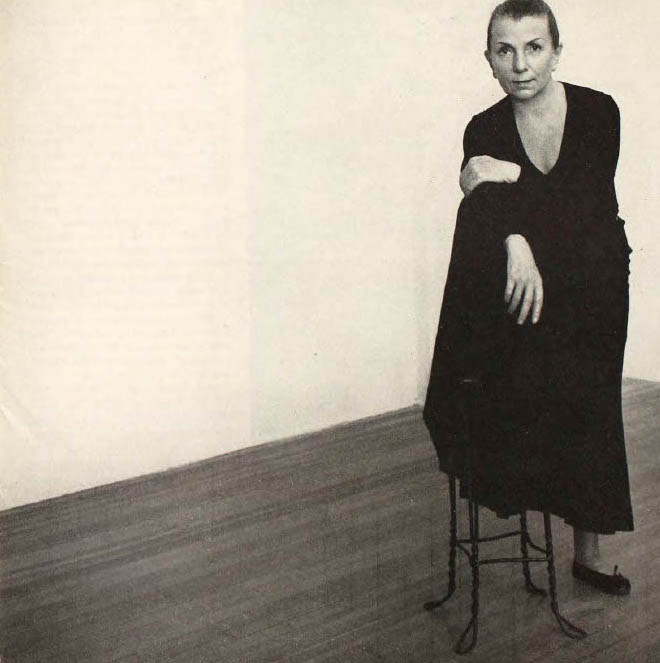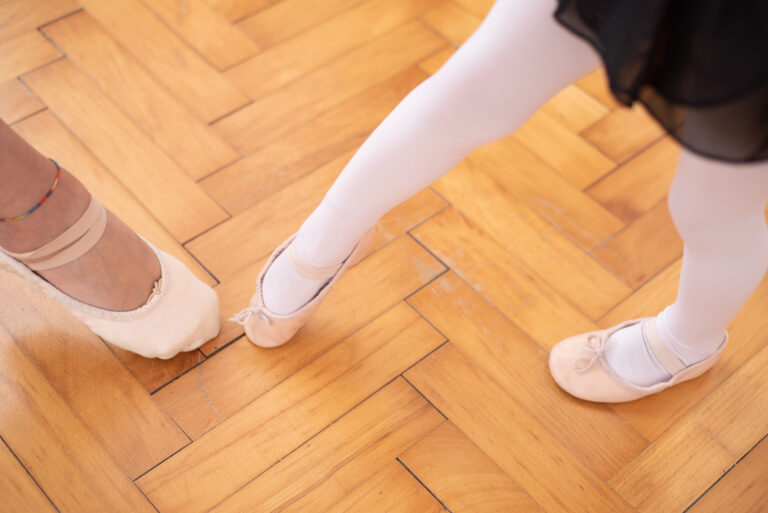
Choreographer Mandy Moore is perplexed about the way students in her convention classes transition from standing to the floor. “It’s like kids turn off their brains!” she says. “Why would you take the most difficult route to the floor? Why would you ever try to do a triple back flip to get there?”
Despite its commonplace use in most styles, floorwork often proves difficult for technically trained dancers. Most problematic are the transitions—moving from a standing position to the ground, and gathering the strength required to return to vertical. Finding a resilient, easy relationship with the floor is essential; it allows dancers to increase their versatility and movement efficiency. “Without floorwork, you’re limiting yourself to 50 percent of your potential,” says Benny Simon of Dance New Amsterdam in New York City.
Overcoming Hesitations and Fear
The earlier students become familiar with the floor, the easier it will be to deter hesitation and fear that may develop later on. Moore is a proponent of providing acro or introduction-to-tumbling classes for the younger set. Aside from helping conquer nerves, it will build strength and knowledge of how to safely approach the ground.
When introducing the concept in technique class, start simple and be consistent. Stacy Reischman Fletcher, dance department chair at the University of Southern Mississippi, incorporates a transition to the ground into nearly every stage of her modern class. “I try to sprinkle floorwork into every combination, even if that’s not the goal of the combination,” she says. “Even if it’s just a booty roll in the middle of tendus—it very nicely muddles the distinct separation of being on your feet versus being on the floor.”
Simon, who teaches a Simonson-based modern class, agrees. “I keep things simple. Something as basic as rolling down and using your hands to push you in a different direction, to a plank position, builds upper-body strength and confidence.”
It will help to be specific with your directions by breaking them down to individual body parts. “I’ll cue dancers with initiation points: Right foot stays flat, as left hand moves to the side,” says Simon. Furthermore, providing students with a solid knowledge of anatomy will help ensure that the steps are learned correctly. Dancers who know how to efficiently use their upper body and core strength will be most successful.
Troubleshooting
Dancers train mostly upright and put a lot of emphasis and energy into their limbs—they’re often told to “pull up” during barre to find the greatest vertical length of the spine. But that can lead to a rigid descent to the ground. Getting to the floor smoothly requires malleability and a strong understanding of how the ends of the spine, head to tailbone, relate. “To help my students find that connection, I include folding, curving, twisting, twirling and tilting, even while standing, in a spine sequence,” Reischman Fletcher says. “It’s important to move the spine off vertical as much as you work a plié, so your students get used to it operating in different ways.”
Often, the most underutilized part of a transition is the level where dancers are closest to the ground, when their weight is still primarily on their feet. “It’s not about being up and then suddenly being down. It’s more about going through a demi-plié and then sweeping through a big, lunging grand plié on your way to the floor—all while finding the surfaces to support you,” says Reischman Fletcher. “Spirals are great for getting dancers to the floor. By the time you’ve completed your spiral, you’re four inches from the floor, and there’s no worry of slamming down.”
Relating floorwork to more technical movement may help students understand how to transition to the ground. For example, in grand battement, many say that finding the hip crease will help dancers unlock the largest range of mobility from the joint. This concept exists in floorwork, too. Folding and creasing the hips helps dancers get as close to the floor as possible, without straining the hip flexor or surrounding muscles. It also ensures a smooth contact with the marley.
Regardless of the students’ level, drilling the basics is the best way to encourage improvement. “Little ones need the time to think,” says Moore. “They need four counts to put their bodies in the right position before they have to go to the next thing.” As students advance, you can speed up the pace and add variations on the transitions to and from the ground. It can be tedious for those who would rather practice fouettés, but dedicating the time will open up several opportunities technically and otherwise. “Once dancers are asked to explore the possibilities of floorwork in technique class,” says Reischman Fletcher, “it simultaneously becomes a place to imagine movement in their own work.”




